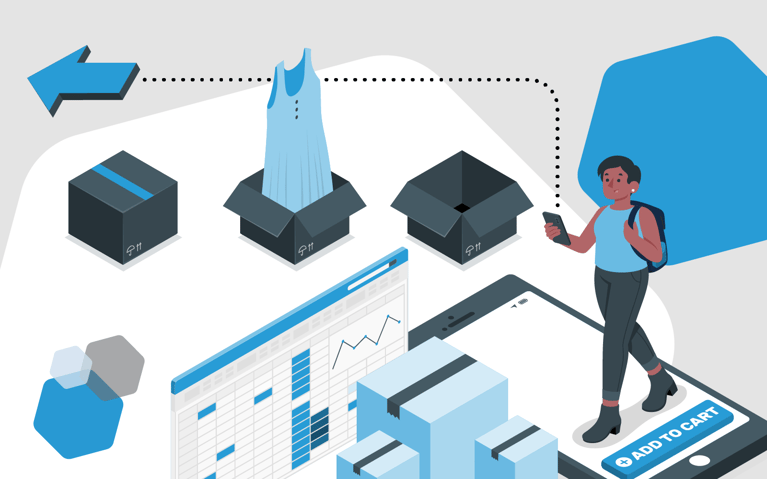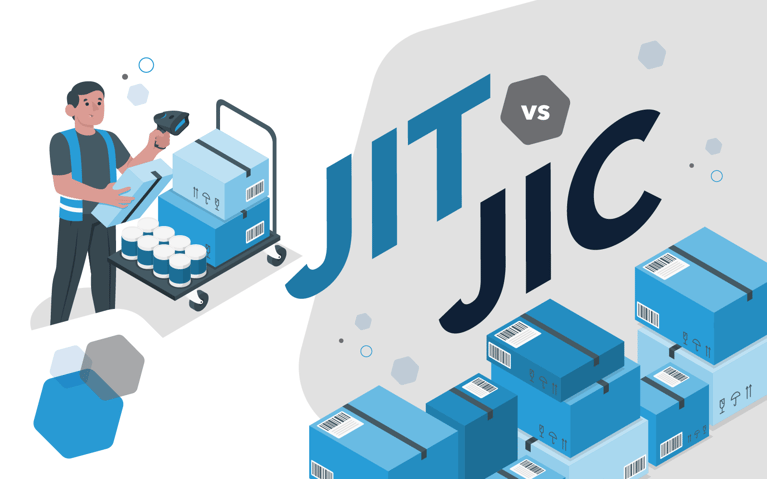A multitude of commerce challenges face today’s supply chain and retail brands. From managing inventory across multiple locations to ensuring timely order fulfillment and maintaining high customer satisfaction, the demands are relentless. For 3PL providers, brands that self-fulfill or any omnichannel or ecommerce retail operation, the need for an efficient and modern Order Management System (OMS) has never been more critical.
An OMS is not just a tool; it's a game-changer in today's competitive and oftentimes saturated market. It plays a pivotal role in creating a seamless customer experience, which is crucial for retaining customers, encouraging loyalty and driving growth. An OMS can significantly enhance operational efficiency and customer satisfaction by integrating various sales channels, streamlining order processing and providing real-time inventory visibility. Here are six common commerce challenges and key ways an OMS can help you overcome them.
#1: Order processing
Managing orders from multiple sales channels such as ecommerce platforms, brick-and-mortar stores, social platforms and online marketplaces can be incredibly complex. Each channel has its own requirements and processes, which can easily lead to errors and inefficiencies. This is where the right order management system software can ease the challenge by consolidating orders from all these sources into a single, unified interface. Omnichannel commerce requires a unified commerce approach – and your OMS plays a central role in providing a holistic view of your operations.
By integrating an OMS, businesses can streamline their order processing. Instead of juggling disparate systems and manually reconciling orders, an OMS automates the process, reducing the likelihood of errors and ensuring orders are processed swiftly and accurately. This not only accelerates order fulfillment but also enhances customer satisfaction as orders are handled more efficiently.
As an example, think about a retail brand using outdated OMS software. The old system could not keep up with the increasing volume of orders from their expanding ecommerce site and new marketplace partnerships. This led to frequent order delays, inventory mismanagement and unhappy customers. After upgrading to a modern OMS, the brand experienced a significant turnaround. The new system seamlessly integrated with all sales channels, automatically consolidating orders and providing real-time inventory updates. As a result, the brand reduced order processing times by 40%, minimized errors and dramatically improved the customer experience. This upgrade streamlined their operations and provided a scalable solution that could grow with their business.
#2: Inventory management
Managing inventory across multiple locations and sales channels can be a daunting task. The complexity of tracking stock levels in real-time, preventing stockouts and avoiding overstock situations requires a robust solution. Modern order management system software provides the real-time visibility and updates necessary to optimize inventory management.
With an OMS, businesses gain a consolidated view of their inventory across all channels and locations. This helps maintain accurate and optimal stock levels, minimizing the risk of stockouts that can disappoint customers or overstock situations that tie up valuable capital. The system also enables better inventory turnover by analyzing sales data and forecasting demand, ensuring that the right products are available at the right time.
For instance, many retail brands struggle with inventory discrepancies and frequent stockouts due to manual tracking or outdated solutions. By implementing an OMS, you can achieve real-time synchronization of inventory levels, which can help you reduce holding costs and significantly improve inventory turnover rates.
#3. Fulfillment speed and accuracy
Quick and accurate order fulfillment is crucial for meeting current customer expectations and maintaining customer satisfaction and loyalty. Delayed or incorrect orders can lead to unhappy customers and negative reviews, harming a brand's reputation. According to a survey cited in Website Magazine, 69 percent of consumers are much less or less likely to shop with a retailer in the future if an item they purchased is not delivered within two days of the date promised. Furthermore, 16 percent of respondents will abandon shopping with a retailer altogether if they receive an incorrect delivery just one time, and 14 percent will do so if they receive a late delivery just one time. The right order management system software is pivatol in ensuring that orders are processed, picked, packed and delivered efficiently and accurately.
An OMS streamlines the fulfillment process by automating order routing to the appropriate warehouse or fulfillment center based on factors like location, inventory levels and delivery speed. This reduces the time taken to pick and pack, and ship orders, ensuring that customers receive their purchases promptly. An OMS can also minimize human errors by providing clear instructions and real-time updates to warehouse staff. An OMS has the potential to dramatically improve order accuracy and fulfillment speed, optimizing operations and helping brands and logistics providers meet customer expectations consistently.
# 4. Multi-channel and multi-location integration
Managing sales, inventory and fulfillment across multiple channels and locations can be challenging. Without a centralized system, it’s can create issues with orders, tracking and monitoring inventory, maintaining consistency in operational processes and procedures and communicating effectively. However, an OMS has the power to consolidate all orders across channels and locations into a single interface.
This centralized and holistic order management ensures a consistent customer experience and streamlined operations. An OMS automates fulfillment workflows by integrating with Warehouse Management Systems (WMS) and Transportation Management Systems (TMS), facilitating faster pick, pack and ship processes and offering dynamic freight rate shopping. This reduces fulfillment errors and ensures timely delivery while maximizing cost savings. In essence, an OMS seamlessly synchronizes multiple channels, effectively managing orders, locations and inventory.
# 5. Advanced reporting and usable analytics
Data-driven decision-making is essential for success in commerce. An OMS should be able to offer retailers and logistics providers advanced reporting and analytics tools to monitor key performance indicators (KPIs), providing valuable insights into various aspects of the business.
With these tools, businesses can better forecast demand, improve inventory planning and gain strategic insights that drive growth. An OMS tracks metrics such as order processing times, fulfillment accuracy, sales trends and customer behavior. This information is crucial for identifying areas of improvement and making informed decisions.
For example, a brand using an OMS can discover through analytics that a particular product is consistently selling out quickly. With this insight, they can adjust their inventory levels and marketing strategies, increasing sales and customer satisfaction. The ability to leverage data effectively helps give a competitive edge in the market.
# 6. Customer service
Maintaining high customer service standards in a complex fulfillment environment can be challenging. It’s the final leg of the customer journey, and current order and delivery expectations are high. According to the U.S. Chamber of Commerce, nearly 80% of customers say it’s important for a company’s post-purchase experience to be positive. An OMS enhances customer service and the CX by providing better order tracking, automated notifications and easy returns management.
With the right OMS, retail brands and logistics providers can allow customers to track their orders in real time and receive updates on their shipment status, reducing the need for inquiries. An OMS also simplifies the returns process, making it easy for customers to return products and receive refunds or exchanges. An OMS not only improves operational efficiency but also fosters positive customer relationships, essential for long-term success.
Cart.com Constellation WMS, TMS and OMS software
Cart.com’s proprietary Constellation software suite can help overcome key commerce challenges. It will help you power your business with complete control, analytics and insights. Our OMS, WMS and TMS software gives you complete visibility and control over orders and inventory, alongside SKU-level insights across all channels and locations. Effortlessly merchandise products and publish listings across hundreds of social and marketplace channels while synchronizing inventory. Leverage hundreds of reports and end-to-end analytics to track orders from product discovery to delivery, and lower costs with native dynamic rate shopping and savings reporting. Intelligently route orders and allocate inventory to optimal distribution centers. Support BOPIS and BOSFS and seamlessly re-assign or re-allocate orders and inventory across multiple facilities. Optimize operations with AI-powered forecasting and real-time competitive pricing, and automatically build compliant product catalogs for new channels. Unify order visibility and integrate everything with our API-first architecture. Experience a modern, easy-to-use SaaS that doesn't require lengthy, costly deployments. Ready to transform your commerce operations? Request a demo today.
Subscribe to our emails for the latest industry insights!
By entering your email, you agree to receive marketing emails from Cart.com








